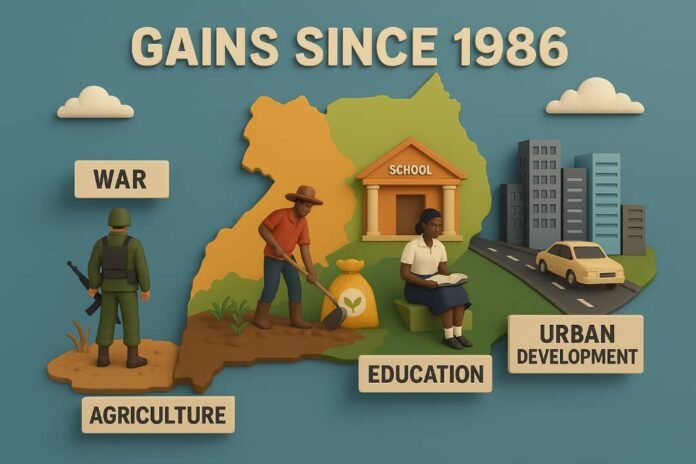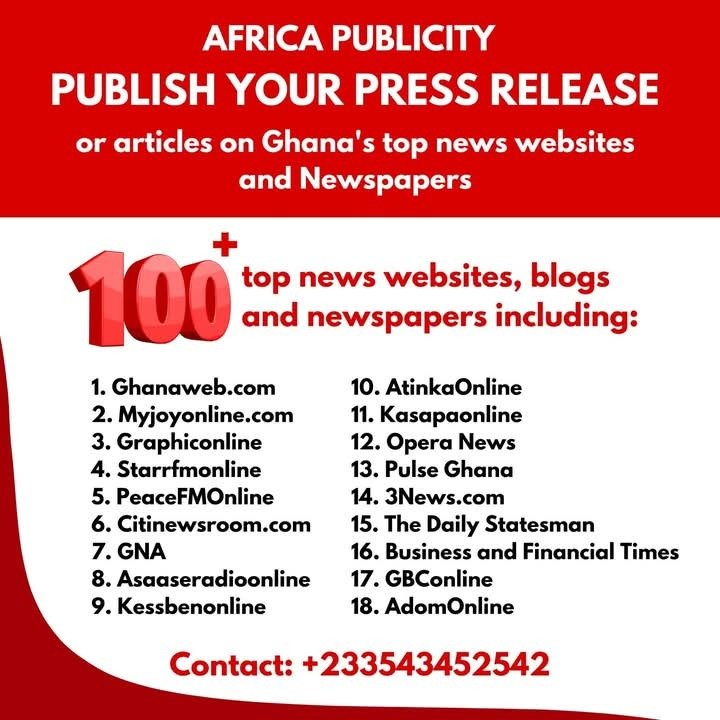By: Isaac Christopher Lubogo
When the National Resistance Army (NRA) — now the Uganda People’s Defence Forces (UPDF) — captured power in January 1986 under Yoweri Kaguta Museveni, it inherited a country deeply fractured by war, economic collapse, and social disintegration. Over the decades that followed, the National Resistance Movement (NRM) government initiated far-reaching reforms that reshaped Uganda’s social and economic landscape. The gains, though mixed and uneven, remain historically significant.
1. Political Stability and Security
The foremost gain of the NRA period was restoration of peace and security after two decades of political turmoil.
The once-fragmented military was transformed into a disciplined, professional national army — the UPDF.
Most regions experienced relative peace, with successful disarmament in Karamoja and the containment of insurgencies such as the LRA in Northern Uganda.
Internal stability laid the foundation for economic recovery and social development.
2. Economic Reforms and Growth
a. Structural and Macroeconomic Reform
In the late 1980s and 1990s, the NRM adopted Economic Recovery Programs (ERPs) supported by the IMF and World Bank, leading to fiscal discipline, liberalization, and privatization.
Inflation dropped from over 200% (1986) to single digits by the mid-1990s.
The Uganda Revenue Authority (URA) was established (1991), improving tax administration.
Uganda’s GDP grew at an average of 6–7% annually between 1992 and 2010, making it one of Africa’s fastest-growing economies during that period.
b. Infrastructure and Investment
Expansion of road networks (Northern Bypass, Entebbe Expressway, oil roads).
Revival of energy sector (construction of Bujagali, Isimba, and Karuma dams).
Increase in foreign direct investment (FDI) and private sector participation.
Development of the oil and gas industry — a major future economic pillar.
3. Social Development
a. Education
Introduction of Universal Primary Education (UPE) in 1997 and Universal Secondary Education (USE) in 2007 drastically expanded access.
Makerere University’s liberalization model inspired growth of over 40 universities and tertiary institutions.
Literacy rates rose from 43% (1986) to over 76% (2023).
b. Health
Health infrastructure expanded — regional referral hospitals modernized; decentralization improved service delivery.
Immunization and HIV/AIDS control programs significantly reduced child mortality and increased life expectancy (from 43 years in 1986 to 64 years by 2023).
Introduction of National Health Insurance framework (in progress) and local pharmaceutical capacity building.
c. Gender and Social Inclusion
Women’s participation in governance institutionalized through the affirmative action system (e.g., Woman MPs per district).
Creation of ministries and funds for youth, PWDs, and elderly.
Women’s representation in parliament rose from under 5% (1986) to over 35% today.
4. Agricultural and Rural Transformation
The NAADS and Operation Wealth Creation programs sought to modernize agriculture and improve household incomes.
Expansion of microfinance and SACCOs in rural areas.
Increased agro-processing industries (coffee, milk, sugar, fish).
Uganda became Africa’s leading coffee exporter after Ethiopia.
Despite challenges of corruption and climate shocks, agriculture remains the backbone of the economy — employing nearly 70% of the population.
5. Regional and International Influence
Under the NRM, Uganda re-established strong regional ties, becoming a key player in the East African Community (EAC) and a contributor to regional peace missions (Somalia, South Sudan, DRC).
Kampala hosted major summits (CHOGM 2007, NAM 2024 preparations), positioning Uganda as a diplomatic hub in the Great Lakes region.
6. Urbanization and Technology
Growth of urban centers (Kampala, Mbarara, Gulu, Mbale, Jinja) and expansion of housing and construction.
Digital transformation through ICT policy reforms — e-government services, mobile money, and fintech leadership.
HIV/AIDS Prevention in Uganda: What Works and What Fails — A Historical and Contemporary Analysis
Over 70% mobile phone penetration and rise of Ugandan innovation hubs like Innovation Village and Mbarara Tech Hub.
7. Governance and Institutional Rebuilding
Introduction of the 1995 Constitution, emphasizing human rights and decentralization.
Strengthening of institutions such as the Inspectorate of Government, Human Rights Commission, Electoral Commission, and Judiciary.
Local government decentralization allowed people’s participation in governance and development planning.
8. Emerging Critiques and Limitations
While gains are undeniable, critics argue that:
Corruption and patronage networks have weakened service delivery.
Youth unemployment and income inequality remain high.
Overdependence on foreign aid and limited industrialization hinder sustainable transformation.
Longevity of rule has bred political fatigue and reduced accountability.
Conclusion
Since 1986, Uganda’s NRA/NRM legacy has been one of stabilization, reconstruction, and social expansion, yet shadowed by governance contradictions and uneven growth.
In sum:
The guns of 1986 silenced chaos — but the conscience of transformation still battles corruption, inequality, and moral fatigue.
The next phase of Uganda’s story will depend not on what the NRA liberated us from, but on what the nation can now liberate itself into.








